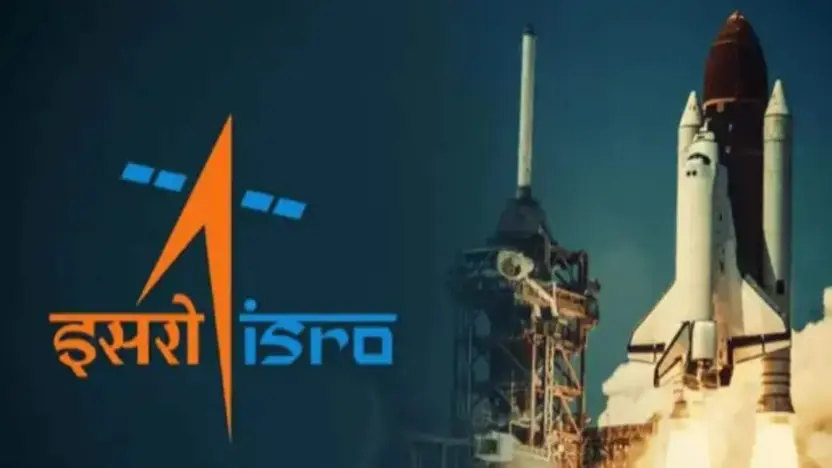India’s Space Research Organisation (ISRO) has carved an indelible mark in the realm of space exploration. Over the years, ISRO has achieved remarkable milestones, placing India among the elite group of space-faring nations. In this blog, we will delve into ISRO’s recent Milestones, analyze their impact on India’s space exploration journey, and explore the organization’s future aspirations. Join us as we unravel the extraordinary achievements of ISRO that have made the nation proud.
ISRO’s Journey – A Brief Overview
Established in 1969, ISRO embarked on a mission to harness space technology for national development. In its early years, the organization focused on developing communication satellites, including the launch of Aryabhata, India’s first satellite, in 1975. Since then, ISRO has achieved several milestones, progressively venturing into diverse aspects of space exploration, from communication to remote sensing and interplanetary missions.
Over the years, ISRO’s pursuit of excellence has extended beyond the Earth’s confines, reaching for the stars with interplanetary missions that have left an indelible mark on the scientific community and captured the world’s imagination.
Recent Accomplishments of ISRO
In recent years, ISRO has notched up several groundbreaking achievements. Notably, the successful Chandrayaan and Mangalyaan missions stand as a testament to India’s space capabilities. Chandrayaan-2, launched in July 2019, aimed to explore the Moon’s south polar region and conduct geological studies. Although the lander Vikram faced challenges during the descent, the orbiter continues to provide valuable data.
Mangalyaan, or the Mars Orbiter Mission (MOM), launched in 2013, was a historic achievement, making India the first Asian country to reach Martian orbit and the fourth space agency globally to do so. MOM’s primary objective was to study the Martian surface and atmosphere, adding new dimensions to our understanding of the Red Planet.
ISRO has also achieved great success in launching a multitude of communication satellites, bolstering India’s communication infrastructure and providing essential services like telemedicine, disaster management, and rural connectivity.
The recent Chandrayaan 3 mission aims to take one step closer to discovering habitable exoplanets. The “Spectro-polarimetry of Habitable Planet Earth (SHAPE)” will contribute to future discoveries of smaller planets in reflected light, opening doors to explore a variety of exoplanets and assess their potential for habitability or the presence of life.
Other notable Accomplishments of ISRO in recent years:
- Mars Orbiter Mission (Mangalyaan): Launched in November 2013, the Mars Orbiter Mission was a significant success for ISRO as it made India the first country to reach Mars orbit on its first attempt.
- Launch of 104 satellites: In February 2017, ISRO set a world record by launching 104 satellites in a single mission, demonstrating India’s prowess in low-cost space missions.
- Chandrayaan-2: Despite a last-minute setback in achieving a soft landing, the Chandrayaan-2 mission launched in July 2019 was a significant step forward for ISRO. The orbiter continues to function and has achieved several key objectives, like mapping the lunar surface.
- GSAT-30 communication satellite: In January 2020, ISRO successfully launched the GSAT-30 communication satellite to provide high-quality television, telecommunications, and broadcasting services.
- Navigation with Indian Constellation (NavIC): This is India’s indigenous global navigation satellite system, developed to provide accurate real-time positioning and timing services over India and the region extending to 1500 km around India.
- Gaganyaan mission: This is ISRO’s ongoing human space flight mission which aims to send Indian astronauts, called vyomanauts, to space.
The Chandrayaan 3 Mission: Advancing India’s Lunar Exploration
After the partial success of Chandrayaan 2’s Vikram lander, ISRO has been gearing up for a new attempt at a soft landing on the lunar surface. Chandrayaan 3 is planned as a joint venture between ISRO and Russia’s space agency, Roscosmos, to maximize expertise and resources. The mission’s primary objective is to successfully land a rover on the Moon’s surface and conduct various experiments to expand our knowledge of the lunar environment.
The lander payloads of Chandrayaan 3 include some cutting-edge instruments. The “Radio Anatomy of Moon Bound Hypersensitive ionosphere and Atmosphere (RAMBHA)” will measure near-surface plasma density changes over time. “Chandra’s Surface Thermo-physical Experiment (ChaSTE)” will analyze thermal properties of the lunar surface near the polar region. The “Instrument for Lunar Seismic Activity (ILSA)” aims to study seismicity around the landing site and provide insights into the lunar crust and mantle’s structure. Lastly, the “LASER Retroreflector Array (LRA)” will passively help in understanding the dynamics of the Moon’s system.
Impact on India’s Space Exploration
ISRO’s achievements have had a profound impact on India’s technological advancements and its standing in the global space community. The organization’s cost-effective and innovative approach to space missions has garnered worldwide recognition. ISRO’s satellite launch services, through the commercial arm Antrix Corporation, have enabled international customers to place their satellites into orbit, establishing India as a reliable player in the space launch market.
The benefits of ISRO’s missions extend far beyond space exploration. Weather forecasting and disaster management have significantly improved due to advanced satellite data, aiding in timely warnings and response coordination during natural calamities. Additionally, ISRO’s remote sensing satellites have been pivotal in agricultural planning, water resource management, and urban development.
Challenges Faced by ISRO
ISRO’s path to success has not been without challenges. Developing and executing space missions demand meticulous planning and precision. During its journey, ISRO encountered hurdles in terms of technological complexity, budget constraints, and geopolitical factors. However, the resilience and determination of ISRO’s scientists and engineers have helped overcome these obstacles, leading to triumphant achievements.
Future Endeavors and Goals
ISRO is not resting on its laurels and has ambitious plans for the future. Upcoming missions include Aditya-L1, India’s first solar mission, aiming to study the Sun’s outermost layer and its impact on the Earth’s climate. Gaganyaan, the much-anticipated human spaceflight program, is set to propel India into the exclusive club of countries capable of sending humans into space.
Additionally, ISRO is focusing on developing reusable launch vehicle technology to optimize the cost of space missions and improve sustainability. These missions underscore ISRO’s commitment to pushing boundaries and elevating India’s status in space exploration.
International Collaborations and Partnerships
ISRO recognizes the significance of international collaborations in space research. The organization has collaborated with various space agencies and countries, sharing knowledge, expertise, and resources for mutual benefit. Joint missions and research initiatives further contribute to scientific advancements and strengthen diplomatic ties between nations.
Inspiring the Next Generation
ISRO’s accomplishments have had a profound impact on young minds, inspiring the next generation of scientists and engineers. The organization actively engages in educational initiatives and outreach programs to cultivate an interest in space science among students. The success stories of ISRO’s scientists and engineers serve as beacons of inspiration for aspiring space enthusiasts.
Also Read: How AI Can Solve Global Challenges



